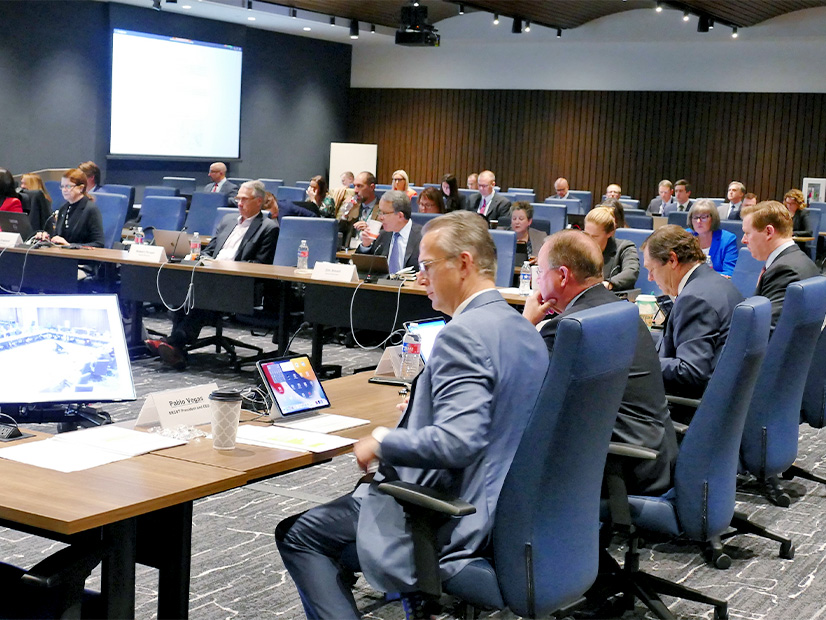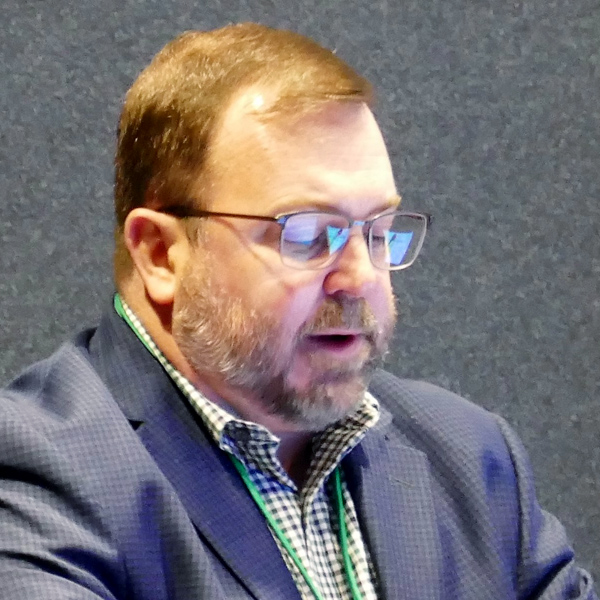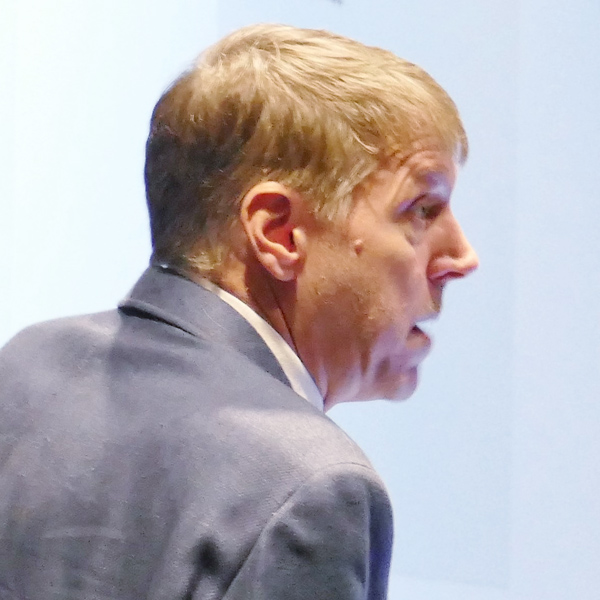
Members, TAC Stripped of Responsibilities for Policy Development
ERCOT’s Board of Directors on Tuesday stripped away the right of corporate members to vote on future changes to the grid operator’s bylaws, rejecting an alternative stakeholder recommendation in the process.
The directors approved bylaw amendments, drafted by staff at the board’s direction, that remove ERCOT’s corporate members’ ability to vote “on any matter submitted to the general membership.” The amendment does allow members to comment on any such proposals and to propose amendments themselves.
The bylaw revisions take away the Technical Advisory Committee’s ability to recommend policy and procedural changes to the board. It leaves that top stakeholder group with doing little more than managing the process for changing market rules and document guides.
Stakeholders have expressed their opposition to the change since the draft amendments became public late this summer. The revisions are designed to align ERCOT’s governance with legislation, passed in the wake of the deadly 2021 winter storm, that created an independent board and removed market representatives from participating. (See ERCOT Stakeholders Wait on Bylaw Amendment Changes.)
 Chris Hendrix, Demand Control 2 | © RTO Insider LLC
Chris Hendrix, Demand Control 2 | © RTO Insider LLC“There’s no real avenue to meet with the board,” Demand Control 2’s Chris Hendrix told RTO Insider. “It makes it more like a PJM model or an ISO-NE model, where you have no access to the board.”
Hendrix represented the membership and six of the seven market segments (investor-owned utilities were not involved) in offering up an alternative recommendation that agreed with much of the bylaw revisions but carved out three exceptions: retaining members’ voting rights, removing staff’s language that gives the board authority to amend TAC’s procedures without a vote of its representatives and removing language that allows the directors to disband TAC.
“Keep corporate members voting because it is a corporate membership,” he said. “It’s an incentive. We pay to be a member, and that comes along with voting rights.”
Several directors pointed to revised language giving members a 21-day window to comment on any proposed changes and noted that TAC can’t be disbanded without the Public Utility Commission’s direction.
Hendrix said the changes allow the board to set TAC’s policies and procedures, which could lead to extreme measures such as meeting once a year or eventual disbandment. He said that its only “the good word of the PUC” that prevents drastic changes.
The commission in November issued a statement that helped set the stage for this week’s discussion. The commissioners agreed that ERCOT’s board is “empowered to amend its bylaws without obtaining the affirmative vote of the corporate members. It is necessary for ERCOT to amend its bylaws such that the ERCOT board of directors has the sole authority to change the bylaws, subject only to the approval of the commission.”
The statement also called for preserving market participant input in developing market functions by amending the bylaws such that the board “cannot eliminate [TAC] without specific direction from the commission.” (See “PUC Sides with ERCOT Board,” Proposed ERCOT Market Redesigns ‘Capacity-ish’ to Some.)
“I believe the proposed bylaws changes represent something that is not dissimilar to the organizational structures that we see in the rest of the country,” PUC member Will McAdams said before the commission’s separate vote to approve the bylaw changes. “Ultimately, the commission has an appellate jurisdiction to approve all policies, and there’s an obligation on the part of stakeholders, the board and the commission under this contract … to collaborate and work through operational issues as they become apparent so that we can provide the best outcome for the public in Texas.”
Hendrix, who admitted he faced an uphill battle, said the revisions will only help ERCOT’s larger members who can afford to lobby legislators and regulators and might lead some market participants to forego memberships.
ERCOT held a 20-minute annual membership meeting following the board’s executive session, with only a handful of members present. ERCOT CEO Pablo Vegas promised a return to an in-person annual meeting next year and “better opportunities to connect with fellow corporate members, with the ERCOT board of directors … with staff, with commissioners and with other invited guests.”
“I think it’s an opportunity to really connect on the issues that are important to the industry and have an opportunity to get to know each other through that and have a higher-value discussion,” he said.
Board Chair Paul Foster also expressed desire for a “stronger engagement opportunity” next year and said the bylaw amendments represented “another milestone” in ERCOT’s changing governance structure.
“Each board director has now had time over the past year to see the TAC membership and the stakeholders in action and the role they provide in the policy development of the rules that helped run a reliable grid and a fair efficient market,” he said.
Grid Prepared for Winter Weather
Vegas reassured directors and stakeholders that the grid operator continues to expect adequate supplies and reserves in advance of sub-freezing temperatures forecast for the Christmas weekend. He said staff expects to have more than enough generation to handle a projected peak of nearly 68 GW with nearly 90 GW of capacity online. Wind and solar account for 20-22 GW of the available capacity.
During a press conference with Gov. Greg Abbott Wednesday morning, Vegas reduced the online capacity estimate to 85 GW, with wind and solar accounting for 12 GW. He was joined by PUC Chair Peter Lake, who said the ERCOT grid is “ready and reliable.”
ERCOT on Wednesday elevated a previously issued advisory for the extreme cold weather to a watch, effective Thursday morning through Monday, Dec. 26.
“Things are looking good to get through the weekend,” Vegas said.
 ERCOT meteorologist Chris Coleman leans into his weather forecast. | © RTO Insider LLC
ERCOT meteorologist Chris Coleman leans into his weather forecast. | © RTO Insider LLCChris Coleman, ERCOT’s lead meteorologist, said the cold front, part of a powerful winter storm that has settled over the Midwest, will not be as severe as the deadly 2021 winter storm that almost brought down the ERCOT grid.
“We’re several degrees warmer than that, and we will also not have the precipitation associated with it,” he said.
North Texas and the Panhandle will likely see snow, Coleman said. He predicted low temperatures of about 12 degrees F in Dallas and 17 degrees in Austin Friday morning. Freezing temperatures could extend as far as the Rio Grande Valley before conditions begin returning to normal during the weekend.
“We could see 70 degrees [next week], so there’s something encouraging to look forward to,” Coleman said.
Coleman is sticking by his winter outlook, which predicts that this winter will not be as warm as last year’s, but not as cold as 2020/21. This is the third straight winter with the La Niña system in place and will deepen Texas’ drought conditions. Coleman said 52% of the state has drought concerns, up from 46% last year.
“I think the drought will remain in place and potentially expand and worsen here over the next few months,” he said. “I don’t think we’re going to get through this winter, saying, ‘Boy, we had a lot of fun. It was just never warm.’ It’ll likely turn around here, so I’m not closing the door beyond this week on more cold opportunities.”
TAC Membership Set for 2023
A cast of familiar faces will be back for TAC next year following the board’s approval of the committee’s 2023 representatives.
The Office of Public Utility Counsel’s Nabaraj Pokharel, CenterPoint Energy’s David Mercado and Garland Power and Light’s Russell Franklin are the only new additions to the 30-person stakeholder group.
Current TAC Chair Clif Lange, with South Texas Electric Cooperative, has offered to again lead the group next year. Members will vote on leadership during their Jan. 24 meeting.
ERCOT Gets 1st Adjunct Member
The directors approved an adjunct membership for Pine Gate Renewables, a utility-scale solar and storage developer headquartered in Asheville, N.C., with five projects in its Texas pipeline. ERCOT staff said the company does not currently meet any segment requirements but will align with the independent power producers in the stakeholder process.
In other actions, the board approved:
-
-
- Robert Black’s hire as vice president of public affairs following a short stint with AEP Texas and a 30-year political career on the Republican side of the aisle;
- ERCOT’s 2023 methodologies for determining minimum ancillary service requirements, previously endorsed by TAC;
- the Finance and Audit Committee’s acceptance of a system and organization control audit of ERCOT’s market settlements operations that found no reportable exceptions; and
- the Reliability and Markets Committee’s charter, outlining its responsibility to review the grid operator’s core functions and disbanding the Credit Working Group. TAC will add the credit reporting functions to its structure.
-
Board Approves 10 Changes
The board approved a consent agenda that included six nodal protocol revision requests (NPRR), single changes to the Nodal Operating Guide (NOGRR), other binding documents (OBDRR) and the Resource Registration Glossary (RRGRR), and a system change request (SCR):
-
-
- NPRR1128: Sets an ancillary service offer floor 1 cent/MW lower for fast frequency response (FFR) than for other RRS categories to allow FFR procurement up to the current limit, without proration with other RRS categories.
- NPRR1132: Specifies that during local cold weather conditions, each qualified scheduling entity (QSE) must update its generation resources’ and energy storage resources’ current operating plans, real-time telemetry, and outage and derate reporting to reflect any limitations. It also requires each resource entity to provide resource-specific cold weather minimum temperature limits, hot weather maximum temperature limits, and alternate fuel capability information in its submitted resource registration data and update this information as necessary.
- NPRR1138: Requires each resource entity to ensure the reactive capability curve for any intermittent renewable resource accurately reflects its reactive capability when it is not providing real power or is operating at lower levels of real power output.
- NPRR1148: Resolves protocol gaps found during emergency contingency reserve service’s creation of its system change requirements.
- NPRR1152: Removes the protocol requirements to submit emergency operations plans (EOPs), weatherization plans, and declarations of summer/winter weather preparedness; revises procedures for submitting declarations of natural gas pipeline coordination with natural gas generation resources; revises the list of items considered protected information to remove references to weatherization plans and add protections for information relating to weatherization activities; and revises the list of ERCOT critical energy infrastructure information to clarify language concerning EOPs and add protections for information relating to weatherization activities.
- NPRR1154: Updates language to allow for a qualified alternate resource to be considered in calculating the availability reduction factor for the firm fuel supply service (FFSS) resource and provides a new settlement billing determinant providing the FFSS award amount per QSE per FFSS resource by hour.
- NOGRR226: Adds provisions for transmission operator “anti-stall” automatic firm load shedding at 59.5 Hz to mitigate the risk of a total systemwide blackout.
- OBDRR043: Aligns the operating reserve demand curve’s methodology with NPRR1148’s revisions, approved in August, in calculating the real-time reserve price adder.
- RRGRR032: Adds data required to be shared with ERCOT as the reliability coordinator, balancing authority and transmission operator in considering cold weather limitations in its operational planning analysis, real-time monitoring, real-time assessments, and other analysis functions. The grid operator also requires this information for hot weather limitations and making this a requirement for distributed generation resources and distributed energy storage resources.
- SCR821: Allows transmission and distribution service providers to set the voltage set point target information provided to distribution generation or distribution energy storage resources.
-


